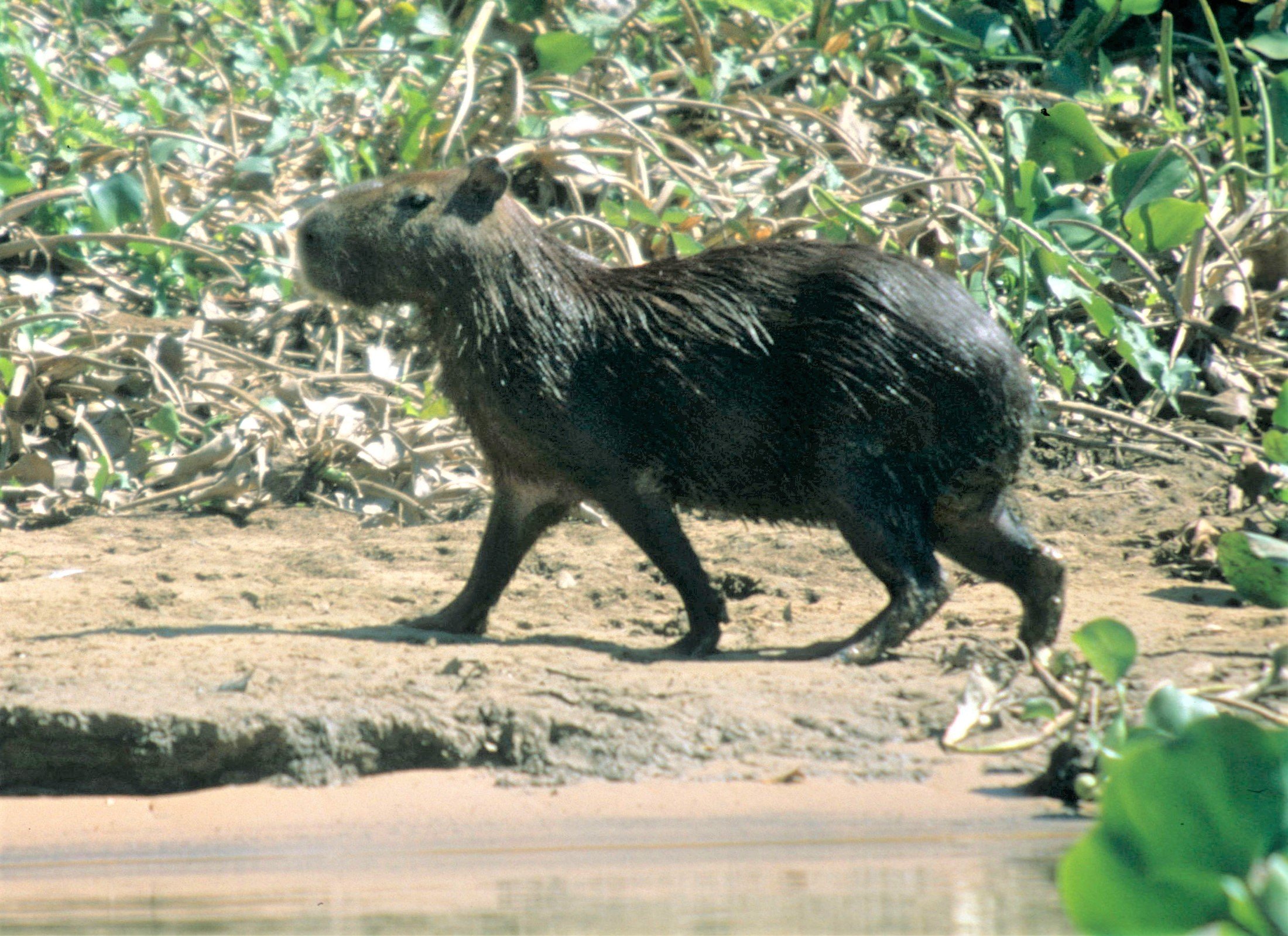The capybara or greater capybara (Hydrochoerus hydrochaeris) is a giant cavy rodent native to South America. It is the largest living rodent and a member of the genus Hydrochoerus. The only other extant member is the lesser capybara (Hydrochoerus isthmius). Its close relatives include guinea pigs and rock cavies, and it is more distantly related to the agouti, the chinchilla, and the nutria. The capybara inhabits savannas and dense forests and lives near bodies of water. It is a highly social species and can be found in groups as large as 100 individuals, but usually lives in groups of 10–20 individuals. The capybara is hunted for its meat and hide and also for grease from its thick fatty skin. It is not considered a threatened species.
Capybaras are semiaquatic mammals found throughout all countries of South America except Chile. They live in densely forested areas near bodies of water, such as lakes, rivers, swamps, ponds, and marshes, as well as flooded savannah and along rivers in the tropical rainforest. They are superb swimmers and can hold their breath underwater for up to five minutes at a time. Capybara have flourished in cattle ranches. They roam in home ranges averaging 10 hectares (25 acres) in high-density populations.
Many escapees from captivity can also be found in similar watery habitats around the world. Sightings are fairly common in Florida, although a breeding population has not yet been confirmed. In 2011, one specimen was spotted on the Central Coast of California. These escaped populations occur in areas where prehistoric capybaras inhabited; late Pleistocene capybaras inhabited Florida and Hydrochoerus hesperotiganites in California and Hydrochoerus gaylordi in Grenada, and feral capybaras in North America may actually fill the ecological niche of the Pleistocene species.










